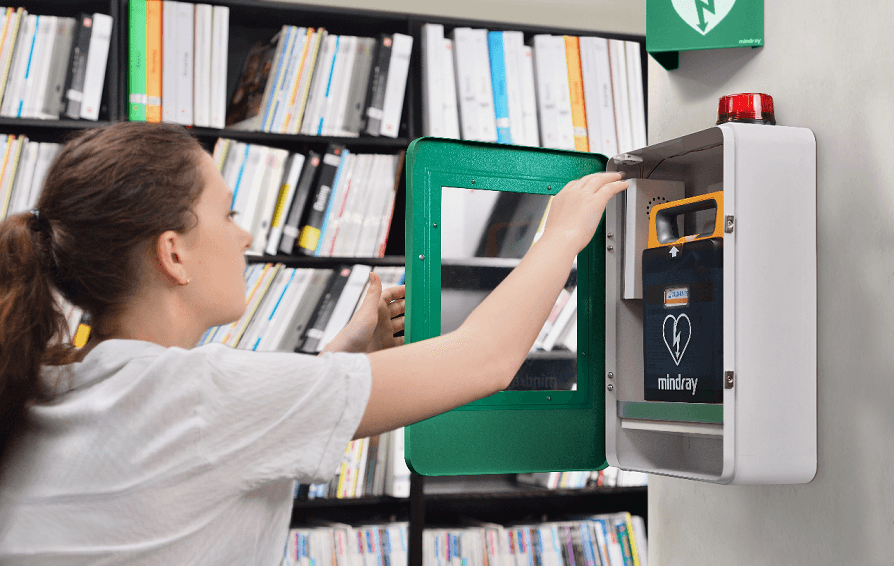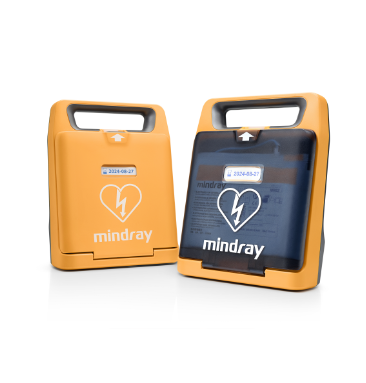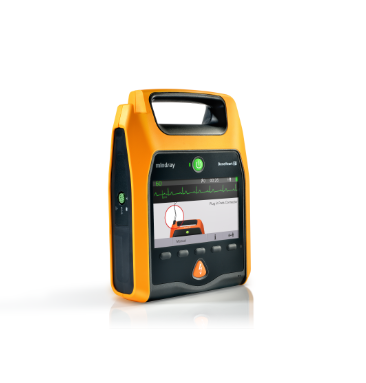Sudden cardiac arrest (SCA) is a cardiovascular disease in which a malfunction in the normal electrical pathway of the heart triggers an abnormal rhythm or complete cessation of the heart, preventing the delivery of oxygen to the brain and other vital organs. As the rescue time for SCA is intense, the patient should be defibrillated within 3-5 minutes of the golden rescue time; otherwise, life will be threatened. An automated external defibrillator (AED), usually placed in public places, has been proven to be one of the most effective ways to save SCA along with CPR. It normalizes the heart rate by delivering an electric shock to the heart of SCA patients, which is what we call defibrillation.
In view of this, the popularization of SCA rescue and the use of AED devices has been placed as a top priority in many countries and regions. Some countries and regions require the installation of AED devices in public places such as stations, airports, stadiums, etc., and some indoor scenarios such as offices and gyms, which makes the accessibility of AED devices to the general public high. Nevertheless, there are still concerns about whether some special places, such as schools, should be equipped with an AED device?
Should School Have an AED?
Some argue that schools are staffed with professional medical teams, so AEDs are non-essential in schools. However, young students, the main population in schools, are more likely to panic when a sudden health problem occurs, which would be difficult to facilitate timely professional treatment and respond even if a professional medical team is staffed. In this case, an easily accessible and easy-to-use AED device is more conducive to teachers and medical professionals, even students, to provide timely and rapid response.
Secondly, student athletes have a high probability of SCA. A study conducted at the Children's Hospital of Philadelphia found that SCA is the leading cause of death in young athletes, and with two-thirds of deaths due to SCA in children occurring during sports or activities.[1] Schools are responsible for the safety of students' health, so there is a need for AED for schools.
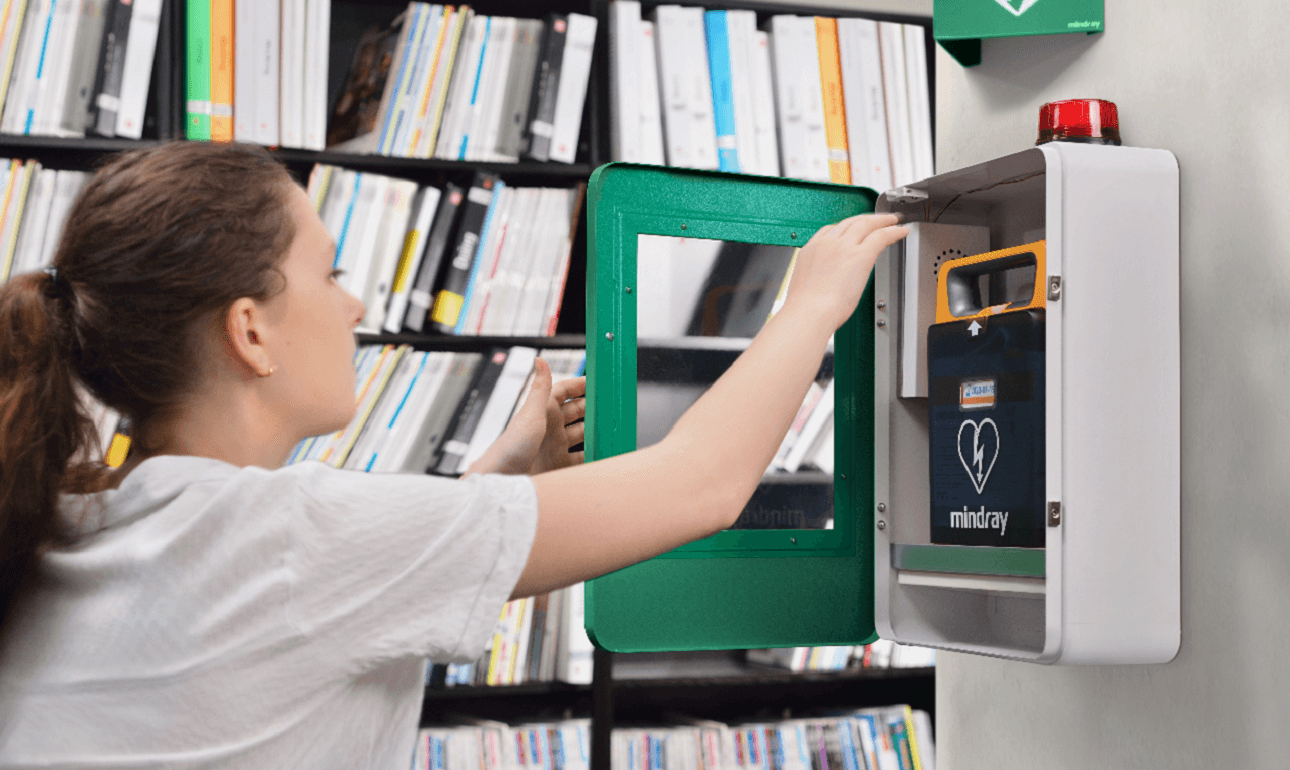
How Many AEDs Should a School Have?
Schools should have at least one AED in the case of SCA, but multiple AEDs are recommended for schools with large footprints. To assess whether the distance from the AED device to each important location in the school can be reached within 3-5 minutes is what school managers need to do when considering this issue. If not, configuring multiple AEDs for schools is recommended to ensure that every part can be responded to promptly.
Where Are AEDs Located in Schools?
Considering visibility, availability, congregation, and high-risk areas, school medical offices, gymnasiums, academic buildings, cafeterias, and dormitories are the preferred locations for AEDs. Instead of simply storing AEDs in a corner or on a desktop, there should be an AED wall-mounted solution that facilitates the visibility of AEDs, prevents AEDs from damage, and ensures AEDs in normal status, whether indoors or outdoors.
How Do Schools Implement an AED Program?
Since it is of great significance to install AEDs in schools, the following items are a must for school administrators to learn for a successful AED program implementation:
- Purchase the right AED with outstanding features, e.g. easy to use, audio/visual guidance, etc. that fits scenarios in school.
- Register the AED device in compliance with local laws and regulations.
- Conduct regular AED and CPR training courses.
- Manage and maintain the AED devices.
How to choose the right AED for schools?
Only by choosing the right AED for schools can school administrators maximize the use of AED equipment and successfully implement an AED program. Therefore, when purchasing AED for schools, school administrators have to first consider the following factors.
• Cost
The AED cost may be high due to its advanced technological inputs. If a school has to deploy multiple AED devices, the high cost is the biggest gap between the AED equipment and school. Nevertheless, school administrators can seek other ways to obtain AED equipment, such as considering applying for AED grants from the local government or the Red Cross and collecting donations to cover the cost of AED equipment, which will reduce the financial burden caused by the AED purchase.
The high cost of AED equipment is also reflected in the replacement frequency of accessories. As AED replacement pads and batteries are disposable, a higher frequency of replacement will have if AED accessories have a short shelf life, which undoubtedly increases the cost. But if schools consider choosing an AED brand that offers a 5-year shelf life of AED accessories, like Mindray AED, it is more cost-effective than that of conventional shelf life of 2-3 years on the market.
• Ease of use
AED devices are not specially designed for medical professionals, but for even a normal person to save a life in an emergency. Schools are the main places for teenagers who are unfamiliar with SCA and AED devices. It requires administrators to consider the ease of use when buying the right AED for schools. A user-friendly AED has to be equipped with detailed voice guidance or even picture-assisted explanation. For example, Mindray AED devices incorporate the patented ResQNaviTM technology to adjust the speed of voice guidance according to the user's feedback. For people who have not used AED devices, the voice guidance of Mindray AED will be particularly detailed, which is one of the important features of AED for schools.
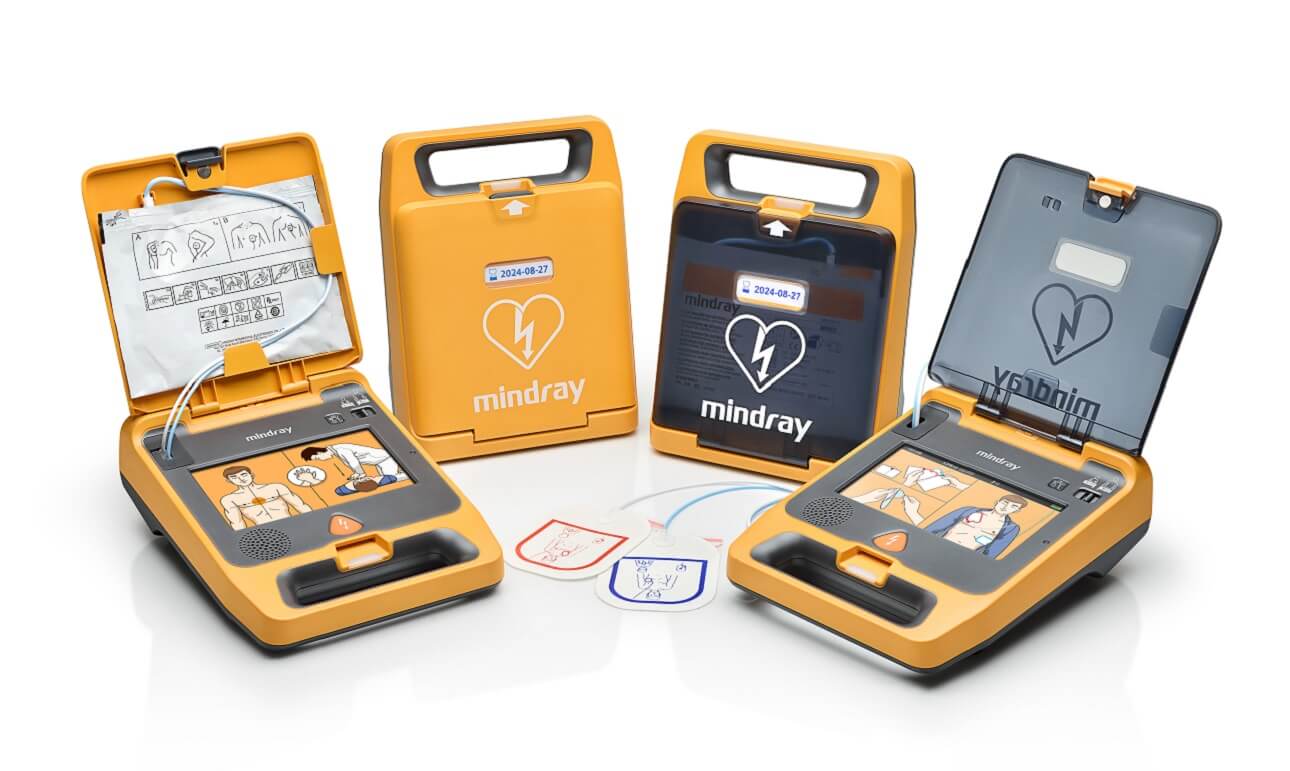
• Multi-language supported
For those international schools or schools with bilingual education, it is suggested that school leaders should consider AED that supports multiple languages. Some AED devices such as Mindray AED allow for pre-setting the device in three optional languages so that users of different native languages can adjust to the language they are familiar with when using the device in order to be more comfortable with the rescue.
• Adult and child modes
The AED for adults generally conducts a greater amount of shock energy than that for children, and the size of AED pads is larger, making them unsuitable for children. It is necessary that AED equipped in school should be capable of switching between child and adult mode easily. In addition, the accessory matters. AED manufacturers should provide pads that fit both adults and children. Some AEDs, e.g. Mindray BeneHeart C series AED, can switch the patient mode accordingly when connecting with the pads.
• Training packages
Schools are the highly recommended place to promote and instruct SCA rescue and AED operations. AED and CPR-related courses in schools are not only beneficial to popularize the knowledge of SCA and AED to students and the community but also maximize the actual effect of AED programs. When purchasing AED for schools, it is best to choose an AED supplier that has a training package to offer.
Conduct AED training regularly
If a cardiac arrest occurs in a school, trained personnel can be more comfortable and proficient in using on-site AEDs and CPR, which can effectively improve the survival rate of SCA. Furthermore, regular training on AED equipment and CPR in schools is conducive to efficiently disseminating of knowledge about SCA rescue and conveying a positive image to the community that the school values the health of its students.
Manage and maintain AED for schools
The successful implementation of an AED program involves the management and maintenance of AED that should always be ready to respond to the sudden onset of SCA. For schools with small areas requiring only one AED, the AED program manager periodically reviews the AEDs based on the AED maintenance checklist and daily self-test reports. For schools with several AEDs in a larger area, the AED program manager not only needs to regularly check the appearance for good condition according to the AED maintenance checklist but also can efficiently manage multiple AEDs with the help of the AED tracking system. The AED tracking system enables remote management of AED machines with functions of checking and reporting their status, alarming abnormalities, recording device usage, and lifecycle management of accessories.
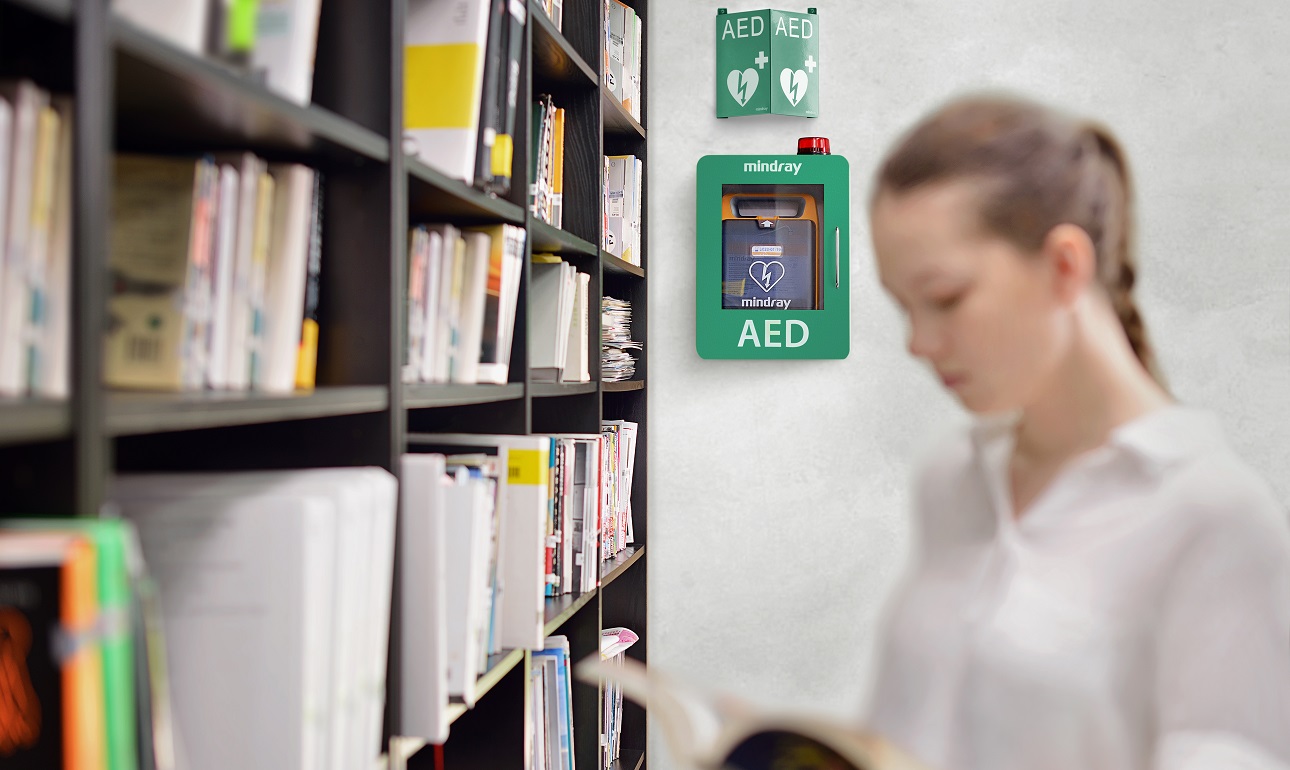
Conclusion
The deployment of automated external defibrillators in schools has been recognized as a long-term benefit for the health of students and parents and to improve the survival rate of out-of-hospital SCA. However, not all AED equipment is school-specific, so school administrators should focus on choosing AED for schools that is easy to use, supports multi-languages, adult, and child modes, and comes with training packages based on the cost budget for AED devices.
Mindray AED is a suitable option for implementing an AED program in schools. The 5-year shelf-life for both replacement pads and battery is designed to reduce the financial burden on schools as well as maintenance costs. The patented ResQNaviTM technology, support for multiple languages, and automatic switching between adult and child modes are designed to provide user-friendly operation. Mindray AED also offers training packages and AED Alert System to assist school managers in running smooth AED programs. Some schools are taking the initiative to prepare for cardiac arrest, and for those schools that have not yet acted, it is suggested to adopt a comprehensive AED solution like Mindray AED solution in their school AED programs.
